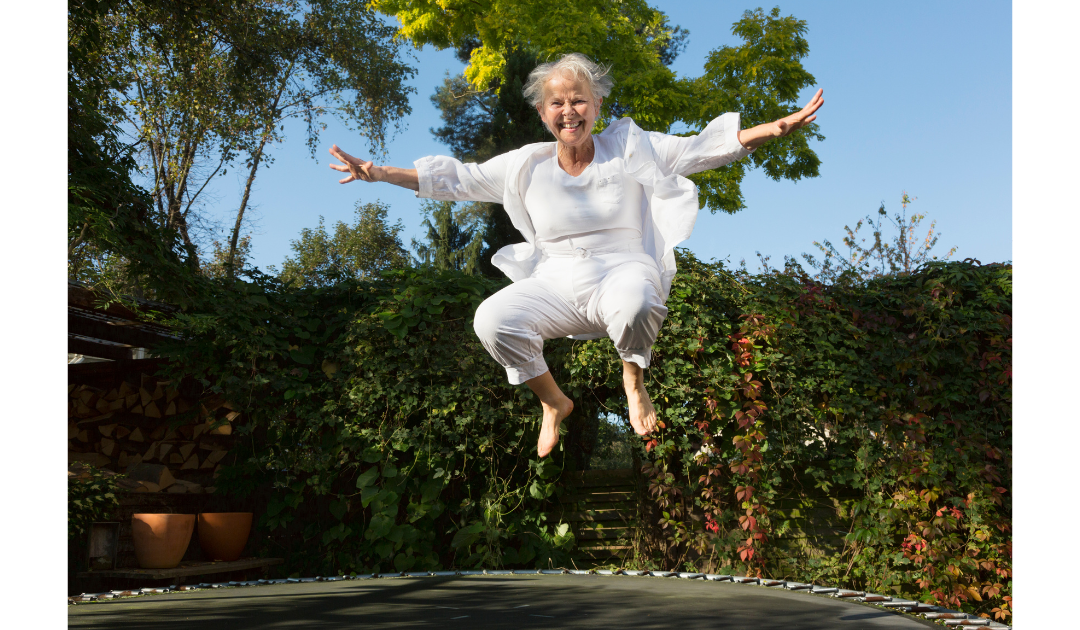I’ve got the power: I blogged in March about how crucial strength training is to long-term health and now to further that focus, let’s think about training for power.
You might think that strength and power are the same thing but, though they are intertwined, strength and power are separate skills requiring different training methods. Strength is a measure of how much force your muscles can produce, seen clearly by the level of weights you slowly lift, while power is far more explosive, being the amount of time it takes to exert that force. Power is about strength coupled with speed and is mathematically explained as being equal to force x velocity (1). You may already be doing plyometrics as part of your power training and will know about explosive power with maximum force in a short period of time. More about those later…
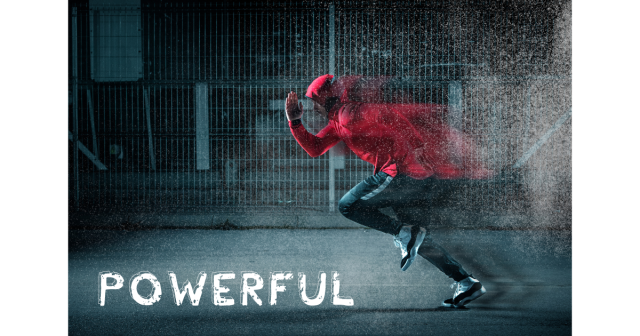
Power is about strength coupled with speed and is mathematically explained as being equal to force x velocity
Although strength is the foundation on which power is built, if you have the former without the latter you’ll be missing a trick. Power and strength together help us to perform dynamic movements in everyday life; such as running up the stairs, rising quickly from a chair, or even lifting a suitcase into the overhead locker on a plane. All things we take for granted, until we find we can’t do them! (2) Be aware that the major reason for reduced strength and power is a reduced level of physical activity. Yet somehow it’s become the societal norm to slow down and relax into old age just when it’s even more important to work out regularly in order to counter the physiological changes the years bring.
I know I sound like a doom monger yet again but, as it’s my job to keep you training, let me tell you that inactive people will lose power as they age more quickly than they will lose strength: every decade after the age of 40, your power is likely to decline by 17% and your strength by 10%, meaning that by the age of 70, you will probably have lost 30% of your strength and 51% of your power unless you take steps to slow this down. I’m afraid we return to the old adage, ‘use it or lose it’ (3).
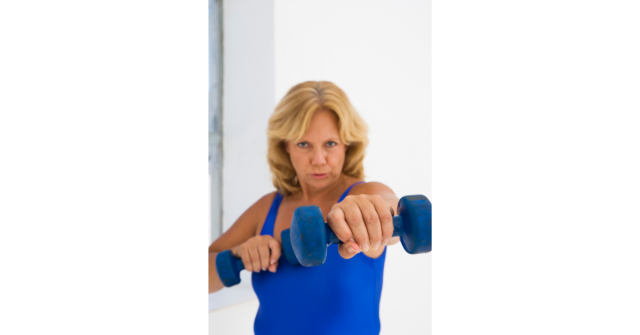
I’ve got the power
Muscle Fibre Types 1 & 2 (2A&2X)
Our strength and power come from the two different fibres within our muscles (4):
Slow twitch fibres:
Contract slowly and keep going for a long time without getting tired. Employed in endurance-based activities such as long-distance running/swimming/cycling and below maximal weight-lifting. They use oxygen to produce large amounts of energy slowly.
Fast-twitch fibres:
Contract quickly and rapidly get tired.They are responsible for rapid, powerful movements, such as short sprints or maximal weight lifting. They don’t use oxygen and produce small amounts of energy quickly.
Our rate of sarcopenia, aka age-related decline of muscle mass and strength, has a lot to do with how these two types of fibre interact with the motor neurons in our nervous system. Motor neurons initiate movement by sending signals to the muscles from the brain. Our loss of muscle mass is led by reduced motor neuron function which causes the muscle fibres to atrophy, meaning get smaller. The bad news is that fast twitch fibres are lost sooner than slow-twitch fibres and this denotes how quickly our bodies will lose power; the rate of loss predicts how we will function physically. We’ve all seen elderly people struggling to rise from a chair or move quickly upstairs – all movements requiring the power and speed that fast-twitch fibres provide and become evidence of their loss.
Brain Health
The good news is that keeping active keeps the brain ‘talking’ to the muscles. Neurologist Dr Murman explains that exercise is vital to nerve growth and brain health, “With ageing there’s a natural loss of synapsis (connection between nerve cells), but being physically active increases synapsis density.”(5)
Activity in the form of resistance training is known to be a powerful intervention in the prevention and treatment of muscle loss as it positively influences the neuromuscular system to increase recruitment of muscle fibres leading to faster muscle contractions and greater force production (6). Resistance training has also been shown to improve hormone concentrations and protein synthesis rates, which counters the age-related decline of muscle-building hormones such as testosterone and oestrogen, which help muscles undergo repair. Nutrition is an important factor in this too and you should ensure your diet provides enough nutrients, including protein, calcium, a daily dose of Vitamin D and good hydration, to maintain and improve muscle health (7)(8)(9).

Muscle recovery foods include:
- Spinach
- Chia seeds
- Blueberries/raspberries – try my blueberry porridge
- Green tea
- Bananas
- Oatmeal
- Eggs
It’s remarkable to think that even back in 1920 Popeye the Sailor was promoting a huge consumption of spinach, which is packed with minerals, protein and essential vitamins, for the effect it had on his muscles. What a role model! Today we have our players at Wimbledon to look to, snacking on bananas and oatmeal bars during breaks between games to aid muscle recovery.
Exercise Prescription
We’ve established that being active is better than being inactive and that any type of resistance training will positively influence the neuro-muscular system but, ask yourself whether the type and level of training you do is sufficient and of the right type to be optimally beneficial? I’m going to stick my neck out and assume that given the choice many of us will opt for a UT2 (Zone 2 heart rate) endurance based session at around 60-70% of our maximum heart rate, because it’s way more comfortable. This will maintain a certain level of strength and fitness but research has shown that you should also include cycles of short-burst/high-intensity training to slow down the loss of fast-twitch fibres and maintain power for longer. I recommend including exercise that is intense enough to recruit fast twitch muscle fibres to effectively slow down the loss of power as well as strength (10)(5).
How to train for power?
Moving the body explosively is the basis of building power and requires a combination of strength, speed and power training. A 2017 study found that although speed training was beneficial to sprint speed, power training was better at increasing jump height. So for maximum explosiveness it’s beneficial to enhance your strength training by including bouts of power and speed as part of your regime (11).
Speed training
You move at a high speed eg. short sprints of 10-40 metres and an example of adding resistance is to load up a sled with a light to moderate weight and push it across the floor for 20-40 metres before then pulling the same weight back across the floor at speed.
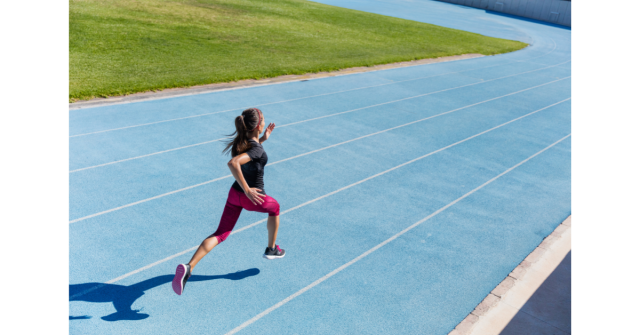
Short sprints increase power
Power training
You produce maximum force at speed with movements such as aforementioned plyometrics, which involve rapid and repeated stretching and contracting of the muscles. This series of explosive resistance exercises lengthens the muscles followed by rapid shortening. Plyometric training can improve athletic performance as it enhances the ability of the muscle-tendon unit to produce maximal force in the shortest amount of time. Remember that plyometrics are not endurance training and reps and weights should be on the low side. (12)
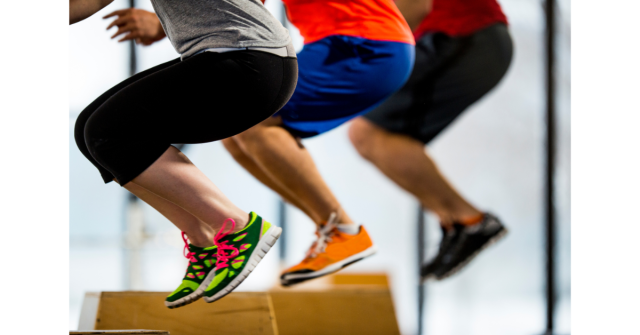
box jumps for power
Some examples of plyometrics:
Note: the power phase is with full explosive intent and make sure you have a safe landing space
Box jump – start at a half-squat position and spring up onto a box before dropping back down to the floor and taking up the half-squat position before springing quickly back up again – 3-4 sets of 5 reps each.
Squats – slow squat down and powerful thrust up to extend your hips adding a jump for an extra challenge – 3-4 sets of 3-6 reps.
Dumbbell push presses – stand with feet shoulder-width apart and holding two dumbbells at your shoulders. Lower into a slight squat and then extend your hips at speed to drive the dumbbells up over your head until your arms are straight – 3-4 sets of 3-6 reps.
Power in endurance sports:
If your focus is an endurance sport, such as rowing, running or cycling, integrating training for power with the necessary hours of aerobic training will not only assist your neuromuscular health but will also improve your performance. While rowing is essentially an aerobic endurance sport, more powerful rowers produce more watts and in turn faster boats. Most of winter training is spent doing steady state outings and long ergos for aerobic fitness but faster boat speed will correlate with greater power. The stronger you are, the better will be your endurance because your per-stroke effort will be reduced. While it’s impossible to pull 100% on every stroke of a rowing race, power as in strength with speed, is needed for maximal intensity at the start of a race and when tactically pushing on with ‘power 10s’ or sprinting to the finish in a close race.
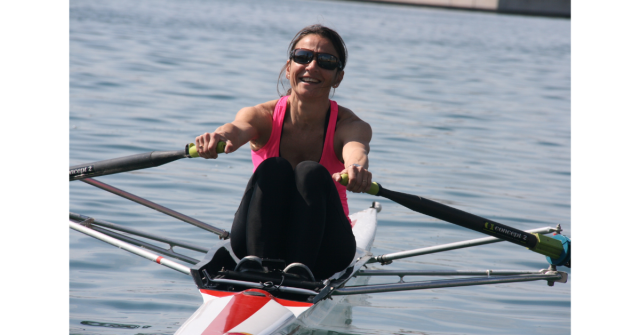
Power in rowing is essential to boat speed
I’ve been talking about age-related sarcopenia and in rowing many participants will still be racing many years after becoming a “Master” at the age of 27. Rather than the 2000m of lane racing, Masters will race a distance of 1000m making it more of a sprint race requiring a higher intensity power output. This coincides with the initial stages of age-related decline in strength and power, making power training for ageing rowers even more key.
In my opinion developing explosive force for rowing with plyometrics is better achieved in the gym than on the water because rowing is not truly a plyometric sport. This is because the propulsive phase of the ‘Drive’ in a rowing stroke is too slow to be plyometric and the ‘Recovery’ phase is unloaded so there is no rapid reversal of force absorption into propulsion. Plyometric exercises, such as jumping or lifting with full explosive intent, train the fast-twitch muscle fibres to develop the reflexes needed to develop and retain power. Plyometrics will improve the neuromuscular ability to develop the necessary lower body force necessary to a powerful ‘Drive’ phase of the rowing stroke and minimise the time between blade entry and full stroke power.
With the lower body being the main power generator in the rowing stroke, exercises such as the kettlebell swing, deadlift and push press will use the upper body in a similar way to the rowing stroke with the force coming from the legs, lower body, torso, shoulders and arms. While plyometrics with low reps to maximise power output on each rep will develop power. (13)(14)
Training for power in later years.
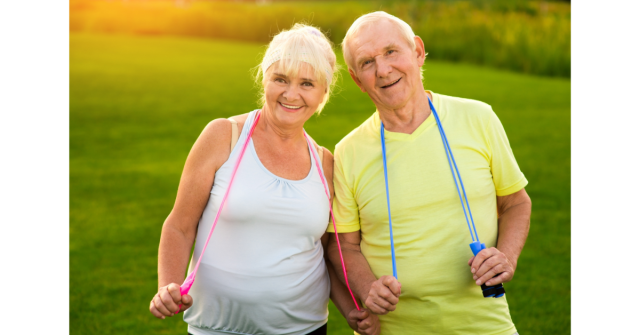
Skipping is a great activity for enhancing power
Whatever your age you can work on your strength and power by making sure you incorporate speed into your activity routine (15).
Some examples that can be carried out at home include:
- Count how many times you can sit down and stand up from a chair in a minute
- Bodyweight exercises like push-ups, squats and lunges (push-ups can be performed vertically against a wall if you struggle with them)
- Use resistance bands and dumbbells to help build strength
- Interval training – combine high intensity bursts of activity with periods of rest – perhaps run up the stairs quickly and descend slowly or sprint to the end of your garden and walk back.
Strength and power will help you maintain balance as you age and reduce the risk of falls, enhance mobility, preserve independence, manage weight and boost metabolic health to fend off diseases like type-2 diabetes. An added benefit of power training is that it increases the heart rate to improve cardio-vascular health and promote better circulation (16).
Health is wealth after all and your quality of life will always be determined by your physical state. So enjoy feeling fit and the prospect of being able to build on that fitness throughout life.

